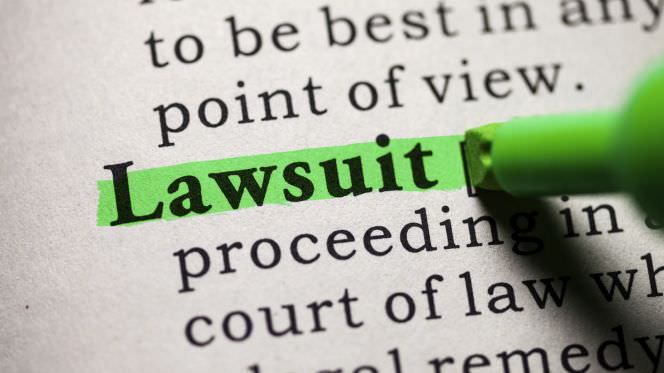Class-action lawsuits are commonly settled for things that benefit the lawyers bringing them, not the class of allegedly victimized people they are supposedly suing on behalf of.
A classic example is Frank v. Poertner, pending before the Supreme Court. Ripped-off class members asking the Supreme Court to hear their challenge to a class action settlement that awarded class lawyers $5.7 million, while 99 percent of class members get nothing, and a third-party nonprofit got a bunch of donated batteries. As Roger Parloff of Fortune asks, “Should Plaintiffs Lawyers Get 94% of A Class Action Settlement?” The Supreme Court should answer with a loud “No.”
The class-action lawsuit was brought against Gillette, the maker of Duracell batteries, over dubious advertising about a type of Duracell batteries that have since been discontinued. Ted Frank, who heads CEI’s Center for Class Action Fairness, is the named objector to this settlement, which was rubberstamped by the Eleventh Circuit Court of Appeals, in a decision that conflicts with other federal appeals court rulings such as Pearson v. NBTY, Inc., 772 F.3d 778 (7th Cir. 2014).
The settlement by the lawyers extinguished the claims of 7.26 million plaintiffs nationwide in exchange for essentially worthless “relief” for that massive class. The parties’ counsel structured the settlement to provide plaintiffs’ counsel more than $5.6 million—a multiple of the “lodestar” value of their hourly bills—while all their clients together realized less than $345,000 and 99 percent of them got nothing at all. The settlement also stipulated that Duracell would give $6 million worth of batteries (retail value) to third-party charities of its own choosing over five years, and provided a meaningless injunction governing only a line of batteries Duracell had already discontinued. (The donation to charity in a class action lawsuit is known as “cy pres.”)
In short, the lawyers reaped over 16 times more than their millions of clients combined. Even pretending that the cy pres award is a benefit to the class (which it is not) would still leave the lawyers with almost half the settlement’s overall value. To justify their exorbitant fees, the lawyers who structured the settlement had pretended that its value was $50 million for class members, but less than one percent of that was ever paid out to them. The cy pres award allowed Gillette to donate product at retail value to a charity it already supported.
Cy pres awards are supposed to go to groups with some relationship to the interests of members of the class, but all too often, the relationship is minimal or absent. In 2007, for example, The Washington Post published a story about how federal judge Harold Baer gave money from a class-action lawsuit by models alleging they were ripped off by agencies to programs for women with eating disorders. As the Post noted, federal judges have repeatedly used such settlements for purposes unrelated to the underlying lawsuit, giving the money to “religious organizations,” “law schools,” and other organizations that “hire lobbyists” to influence judges.
In state court, things can be even worse. As I noted in 2007, California state judges have used “class-action settlements for ideological purposes. Settlements intended to benefit consumers get paid instead to groups that lobby for affirmative action, hate-crimes laws, undocumented immigrants and public funding for abortion, even though many consumers have no interest in such political causes.”
Leftover money from consumer class action settlements have been given to groups that had little or nothing to do with consumers, like the left-wing La Raza Legal Center; the Employment Law Center of the San Francisco Legal Aid Society, which seeks to curb employers’ First Amendment rights; the Lawyers’ Committee; and groups that specialize in advocating affirmative action, broader definitions of “hate crimes” (at the expense of civil liberties), or expanded access to welfare programs for illegal immigrants.
The decision by the court below in Frank v. Poertner conflicts with the rulings of other circuits, meaning that it would make sense for the Supreme Court to hear the case, by granting the petition for certiorari that the objectors filed on December 11 (Docket No. 15-765). Truth in Advertising has filed an amicus brief in support of that petition. The objectors have also filed a reply brief in the Supreme Court that you can find here.
In 2014, the Center for Class Action Fairness won a case, Pearson v. NBTY, Inc., where the Seventh Circuit Court of Appeals struck down a similarly exploitative settlement (in a lawsuit over glucosamine pills). The Pearson settlement paid $2.1 million to the attorneys, less than $0.9 million to the class, $1.1 million in a cy pres donation, and included an injunction involving meaningless advertising changes. The Seventh Circuit held that the settlement was a “selfish deal between class counsel and defendant” and that courts must look at what the class actually receives rather than class counsel’s exaggerated, illusory calculation. Although the Poertner settlement was in many ways worse than Pearson, the Eleventh Circuit refused to apply the same standards as Pearson.
The Eleventh Circuit’s ruling squarely conflicts with how other federal appeals courts evaluate the attorney share of class-action awards, especially the Sixth and Seventh Circuits. (See, e.g., Pearson v. NBTY, Inc., 772 F.3d 778 (7th Cir. 2014); In re Dry Max Pampers Litigation, 724 F.3d 713 (6th Cir. 2013).)
Its decision also squarely conflicts with how other federal appeals courts evaluate the propriety of cy pres relief, such as the Third, Fifth, Seventh, and Eighth Circuits. (See, e.g., Pearson v. NBTY, Inc., 772 F.3d 778 (7th Cir. 2014); Klier v. Elf Atochem, 658 F.3d 468 (5th Cir. 2011); In re BankAmerica Corp. Sec. Litigation, 775 F.3d 1060, 1063-67 (8th Cir. 2015); Holtzman v. Turza, 728 F.3d 682, 689-90 (7th Cir. 2013); In re Dry Max Pampers Litig., 724 F.3d 713 (6th Cir. 2013).)
Via: cei.org




